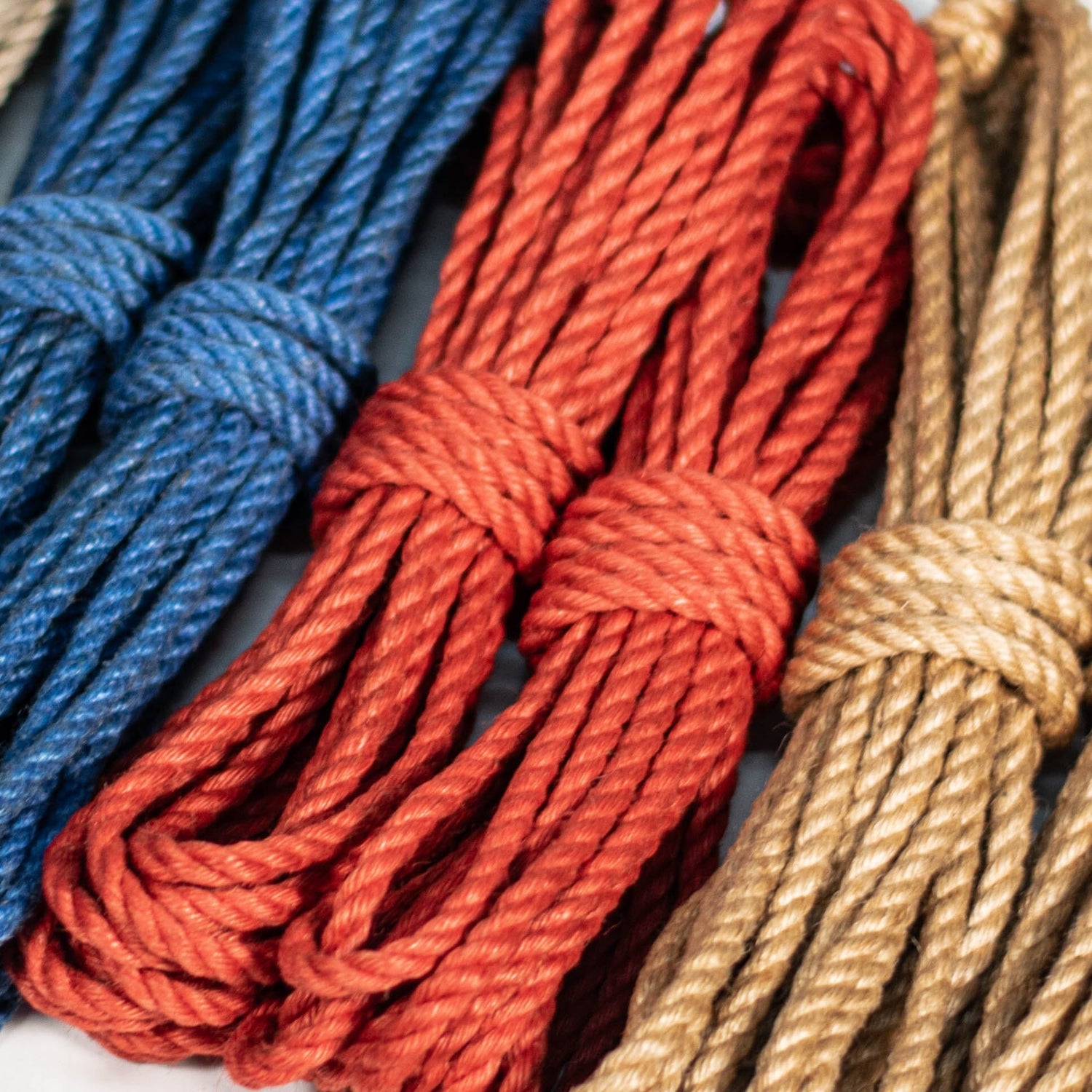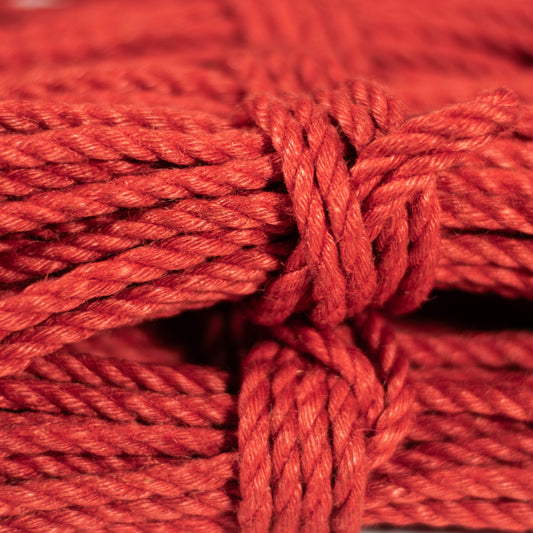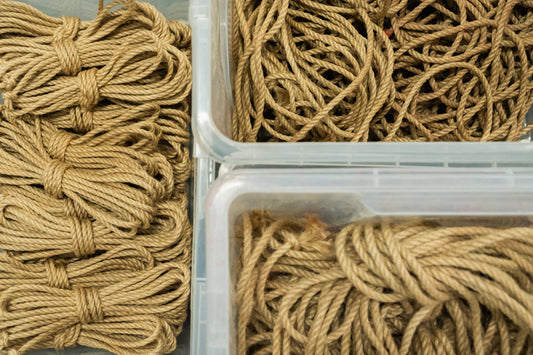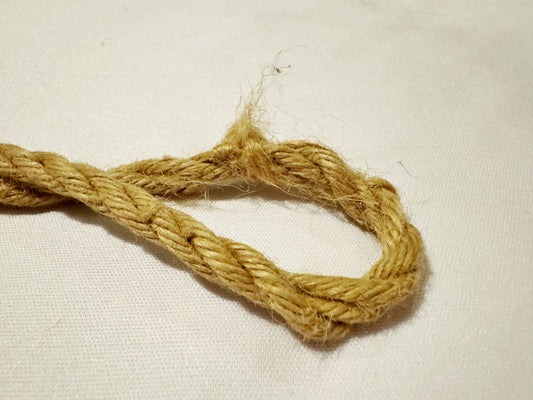Jute is a natural fiber derived from the bark of the jute plant, primarily grown in the Indian subcontinent. Known for its rough texture and high tensile strength, jute is an eco-friendly, biodegradable and renewable resource. These qualities make it an excellent choice for rope making, especially in applications where both strength and aesthetics are important.
There are two main types of jute: white jute and tossa jute. Tossa jute is the preferred choice in the rope industry due to its superior strength and higher fiber yield. Its popularity comes from several key characteristics that make it ideal for rope production. First, tossa jute produces more fiber than other types, making it a more economical choice for large-scale production. Second, the fibers of tossa jute are long and strong, providing the necessary tensile strength and durability required for rope. Lastly, its natural brownish color is often preferred in industrial applications.
Jute is a natural fibre derived from the bark of the jute plant, primarily grown in the Indian subcontinent. Known for its rough texture and high tensile strength, jute is an eco-friendly, biodegradable, and renewable resource. These qualities make it an excellent choice for rope making, especially in applications where both strength and aesthetics are important.
There are two main types of jute: white jute and tossa jute. Tossa jute is the preferred choice in the rope industry due to its superior strength and higher fibre yield. Its popularity stems from several key characteristics that make it ideal for rope production. Firstly, tossa jute produces more fibre than other types, making it a more economical choice for large-scale production. Secondly, the fibres of tossa jute are long and strong, providing the necessary tensile strength and durability required for rope. Lastly, its natural brownish colour is often preferred in industrial applications.
Step 1: Harvesting and Retting
The journey of jute rope begins in the fields. Mature jute plants are harvested and bundled together. These bundles are then soaked in water for several weeks in a process known as retting. Retting helps to loosen the fibres from the woody core of the plant. After retting, the fibres are stripped from the stalks, washed, and dried thoroughly.
Step 2: Spinning the Fibres into Yarns
Once the jute fibres are dry, they are spun into yarns. This process involves aligning the fibres and twisting them together to create a continuous thread. Spinning can be done manually or with the help of spinning machines. The goal is to produce even, strong yarns that will form the strands of the rope.

Step 3: Twisting Yarns into Strands
The spun jute yarns are then twisted into strands. In a three-strand rope, each strand is made up of multiple yarns twisted together in one direction. This initial twist gives the strands their basic structure and strength. The direction of the twist is crucial as it sets up the next step in the rope-making process.
When shopping for rope, you might notice terms like single-ply (1-ply) or double-ply (2-ply). This refers to the number of plies per yarn: a ply refers to the number of yarns twisted together to make a single thread. Generally, more plies make the rope stronger but also stiffer. Single-ply rope tends to be more flexible but requires more maintenance and is more prone to high-stranding (this is how our own jute rope is constructed). However, other construction factors can significantly impact the rope's characteristics. For example, a tighter twist makes the rope more rigid and coarse, while a looser twist results in a smoother and more flexible rope.
Step 4: Laying the Rope
The final step in making three-strand jute rope is called laying. This involves twisting the three strands together in the opposite direction of their individual twists. This counter-twisting technique stabilises the rope, ensuring that it holds together firmly and does not unravel under tension. The result is a strong, flexible rope with a distinctive barber pole or candy cane appearance.
The Aesthetic and Practical Benefits
Three-strand jute rope is both functional and visually appealing, featuring an iconic barber pole or candy cane twisted appearance. This type of rope is commonly found in gymnasiums and landscape installations. The twisted strands create a textured, rustic look that is highly sought after for both practical and decorative purposes. In shibari, the rope's defined ridges and natural colour enhance the visual and tactile experience.
In photography, the twists and grooves of three-strand jute rope create interesting shadows and add an organic look, especially when contrasted against skin or fabric. In contrast, braided ropes have a smooth, uniform surface that can appear "flat" in shibari photos.
Comparing Jute with Other Ropes
When compared to other fibres like cotton, jute stands out for its strength and durability. Cotton ropes are soft and pliable, making them suitable for various applications, but they lack the robustness of jute. Jute ropes, with their high tensile strength and resistance to abrasion, are ideal for demanding uses such as maritime, farming, and shibari!
Conclusion
In summary, making three-strand jute rope involves careful steps, from harvesting and retting to spinning, twisting, and laying. Tossa jute is the best choice for rope because of its strength, high fibre yield, and appealing colour. This type of rope is strong, durable, and looks great, making it ideal for various uses. The rustic, textured look of three-strand jute rope is also perfect for decorative purposes. For high-quality jute ropes that meet all your needs, visit Shibari Store and find the perfect rope for your practice.
At Shibari Store, we take pride in offering high-quality jute ropes that meet the needs of both beginners and experienced individuals. Explore our shop and discover the perfect rope for your shibari practice today!
Happy tying!
References
Additional Resources
- Watch a video on how rope is made here
- Image from "Rope 365": Rope Construction






